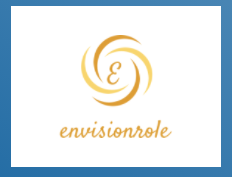Search Engine Spam Toxins and Penalties:
Anyone entering the realm of search engine optimization is likely to encounter some questionable tactics (aka “black hat”), or toxins, as we call them in our Periodic Table of SEO Factors.
These are shortcuts or tricks that may have been enough to ensure a high ranking in the days when engine methods were much less sophisticated.
It is recommended to stay away from these tactics because employing them could result in a penalty or ban.
Rest assured, it’s difficult to accidentally spam a search engine, and the engines look at a variety of signals before deciding if someone deserves a severe penalty.
Cl: Cloaking:
Showing search engine crawlers something different from what is presented to users is called “cloaking” and can be used to trick users into visiting irrelevant or harmful pages.
Unlike some of the other toxins, the cover-up is not something that can happen by accident.
It’s a deliberate attempt to manipulate search results, and if someone is caught doing so, one can expect a very heavy penalty.
The cover-up specifically goes against Google guidelines, but those guidelines are murky at the moment due to JavaScript.
A server-side rendering (SSR) solution offers it only dynamically in conjunction with spider detection.
When handling a Googlebot request, opt to do SSR while all other requests are handled normally, delivering scripts to render in the browser.
That, technically speaking, is a cover-up, but Google looks the other way because they are aware of the intent.
It’s when some content is reserved for spiders that don’t show up to users that things start to cross the line.
Sf: Stuffing:
Suppose that the more times a keyword appears on a page, the search engines will consider the page to be more relevant to the query.
Inserting keywords more often than is natural or helpful to users is called “keyword stuffing.”
It is one of the oldest spam tactics out there and can still be penalized.
Don’t repeat keywords over and over again in headers, texts, footers, anywhere, to try and improve ranking.
There is no magic formula for keyword frequency and keyword density is a myth.
Instead, focus on addressing user intent.
If that results in a keyword appearing only a couple of times or more than a dozen times, it’s far less important than the quality of the content and the value it provides to the audience.
Ar: Piracy:
It is illegal to copy an article, song, graphic, photo, video, etc. of someone else’s intellectual property and pass it off as the owner.
However, that’s not the only reason it’s bad for SEO – users generally want the original source of the content, and search engines want to provide it to them.
Google’s Pirate update targeted sites that violate copyright law.
Plagiarizing or hosting plagiarized or illegal content can be removed from search results.
Check Google Search Console notifications if to suspect a DMCA takedown request has been submitted.
Sc: Schemes:
Searching for backlinks is an essential aspect of SEO, but the rules change when it comes to money.
Paying for links that pass link fairness violates Google and Bing guidelines, and doing so can have dire consequences for organic visibility.
To pay for a backlink to be placed on another entity’s website (such as ads), but those links cannot convey the fairness of the link.
Paid links must be indicated with a link attribute rel = “nofollow” or rel = “sponsored”.
The schemes aren’t limited to buying links either – large-scale guest posting services with keyword-laden anchors, link exchanges, blog spam, and other illicit practices can also result in penalties from search engines.
There are numerous examples of brands that have been arrested for attempting to manipulate search algorithms using these methods, including involving Google itself.
It is far better to see the ranking gradually increase over time than to take shortcuts and have to find the way back after a penalty.
Hi: Hiding:
Site owners who enter keywords on their pages can also try to hide those attempts by hiding the text.
Whether it’s by matching the font colour to the background, placing the text off-screen, reducing the font size to zero, or any other hiding method, hiding the text is a violation of Google’s Webmaster Guidelines and it can result in a fine.
Links can also be styled to make them invisible to users, which some site owners might do to visually obscure paid links when trying to pass link fairness.
However, there is the case of expandable content that is revealed when the user interacts with it; for example, hovering over a link within a Wikipedia article can reveal more information.
Iv: Intrusive:
Whether the roadblock is an interstitial, a flood of ads, or some other intrusive element, having visitors jump through the hoop to find what they’re looking for can hurt the user experience and organic visibility.
For better or for worse, interstitials are now a common part of the mobile user experience.
Google implemented the mobile intrusive interstitial penalty to deter site owners from abusing such elements.
More recently, Google updated its Search Quality Rater Guidelines to address this trend, stating:
A single pop-up ad or interstitial page with a clear, easy-to-use close button is not too distracting, although it may not be a great deal. user experience.
However, difficult-to-close ads that follow page scrolling, or interstitial pages that require an app download, can be really distracting and make the MC [main content] difficult to use.
Not all interstitials are passive. If “used responsibly”, interstitials related to legal obligations (such as privacy or age verification), login dialogues and other banners that use a “reasonable amount of screen space and are can easily rule out “would not be affected by Google’s mobile intrusive interstitial penalty.
